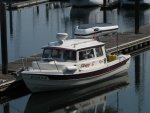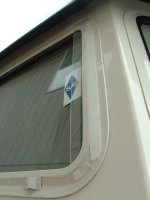ssobol
Active member
- Joined
- Oct 27, 2012
- Messages
- 3,664
- Reaction score
- 20
- C Dory Year
- 2008
- C Dory Model
- 22 Cruiser
- Vessel Name
- SoBELLE
It may depend on what the tube is made out of. It is possible that the warm air from the cabin will maintain the tube at a warm enough temperature to prevent water condensation from occurring in the tube. The tube would need to be of sufficient thermal mass or length to prevent that from happening (perhaps fins on the tube to remove the heat). You'd also want to seal the cabin so no (or limited) humid external air is admitted.


